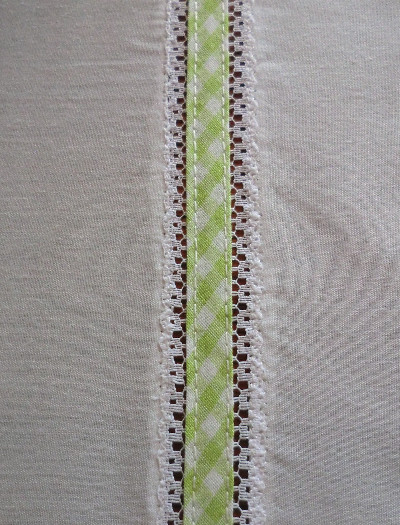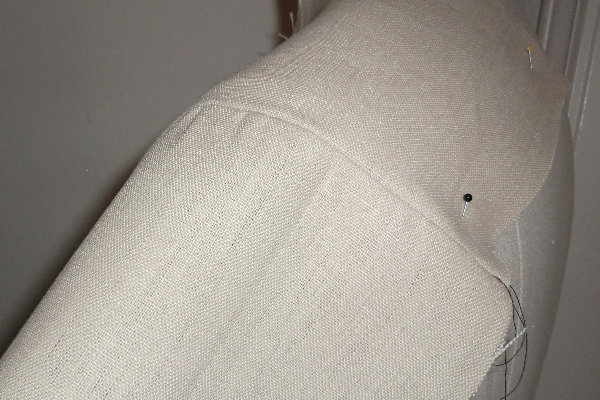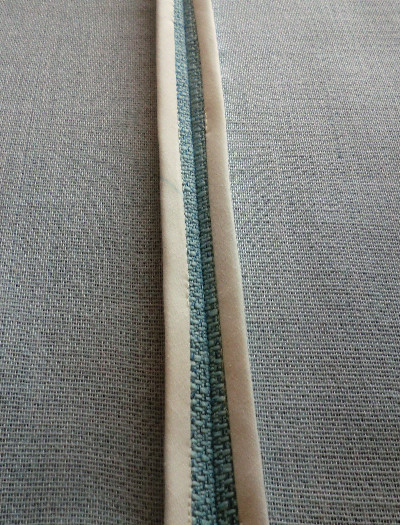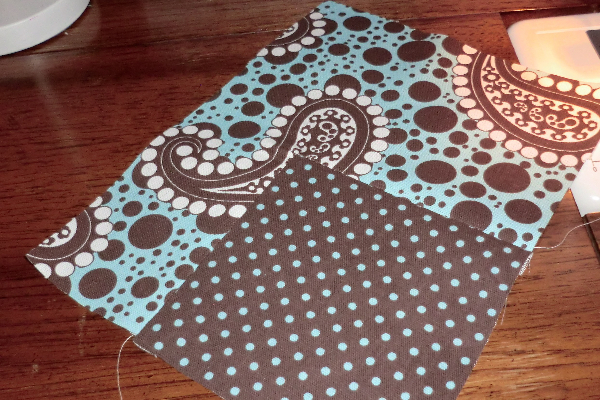Isn’t this sewing technique pretty? You can take a regular piece of fabric and a piece of lace and turn it into this. You’ll need lace that’s the same on both sides (not straight on one edge and scalloped on the other). It’s best if the lace is actually straight on the edges, but the lace shown here has a tiny scallop and worked OK. This lace is so cute. I got it at an estate sale. I felt sort of bad rifling through an old woman’s things — precious things she’d saved for years. I bought some lace but…
Sometimes you’ll have a seam where one piece is slightly longer than the one you are attaching it to. This requires you to ease in the seam. You do this by placing long gathering stitches along the area you need to “shrink.” Then you very carefully gather and distribute the ease until the two sides match up. I’ll show you.
A turned and bound seam finish is a quick and easy way to finish seam allowances and make the inside of your projects nearly as pretty as the outside. In the past, we’ve talked about self-bound seams, slot seams, Hong Kong seams, bound seams 1, bound seams 2, flat-felled seams, and French seams.
Here’s a simple little post about working with knits. Knits are stretchy. In many ways, that’s a good thing for certain uses. And many sewing machines have stretch stitch functions that provide a little more give in the seams. But where do you NOT want give? Places like shoulder seams or V-necks are a couple of examples. Have you ever hung a knit garment only to find the shoulder stretching out when you go to wear it? When sewing, stabilize these seams for a quick, easy solution to stretching.
The self-bound seam has a similar effect to a French seam. It’s a great technique on sheer fabrics where you can see the underside of the seam.
A slot seam allows you to add a little peek-a-boo of fun to your sewing. The seam can lie closed, but it pops open just a bit to reveal another fabric inside. Use a simple contrasting solid, or a whole different print. This can be incorporated into clothing really easily!
A Hong Kong seam is a beautiful way to finish seams in unlined garments. It differs from a regular bound seam in subtle ways, but for one thing, there is a raw edge on the back side of the seam instead of a folded edge, in order to reduce bulk.
Recently, we talked about bound seams. Bound seams are a way to finish the inside of a sewn object so that it looks nice. They are especially nice on unlined jackets. If you want to finish the seams on a sheer garment, try a French seam.A few weeks ago, I demonstrated a one-step bound seam. It’s basically a quick and easy way to accomplish what looks very much the same as this two-step bound seam. The difference is in the number of times you have to stitch the seam. In the one-step, we simply sandwiched the seam allowance inside the…
Bound seams are a beautiful way to finish the inside of an unlined garment. They differ a little bit from Hong Kong seams in that the backside of the bias binding is folded on a bound seam and left raw on a Hong Kong seam (to reduce bulk). A bound seam may use purchased bias tape while you might prefer to make your own bias tape for a Hong Kong seam since you will not have that extra fold.In this case, I did a one-step bound seam. I call it the “easy” method, though it’s not uncommon and is in…
Sometimes you want to insert a square corner into a piece of fabric. You may find this type of colorblocking on garments, but it could have many other applications. How do you do it? It’s a simple technique. Let’s give it a try!












